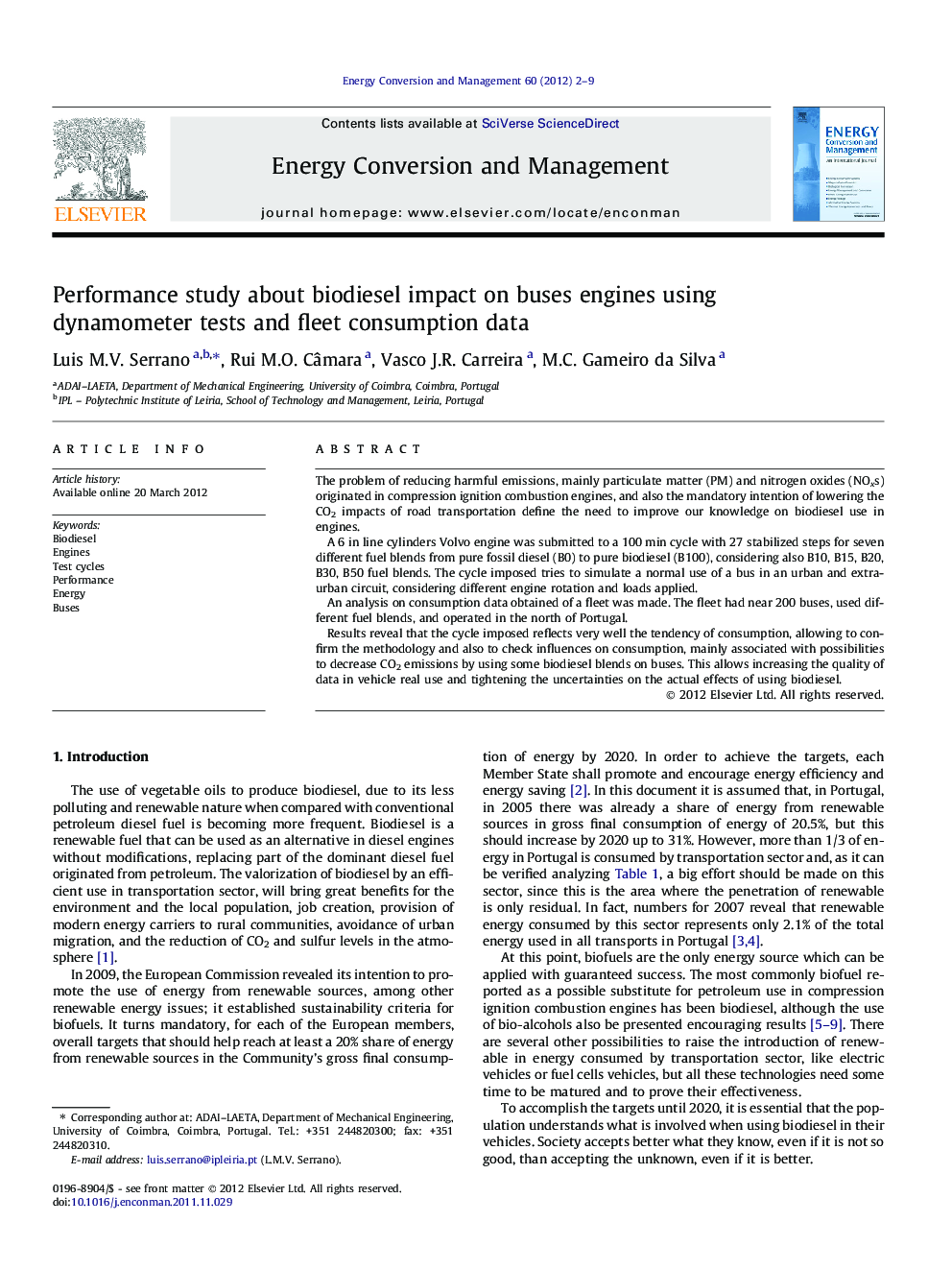| Article ID | Journal | Published Year | Pages | File Type |
|---|---|---|---|---|
| 764314 | Energy Conversion and Management | 2012 | 8 Pages |
The problem of reducing harmful emissions, mainly particulate matter (PM) and nitrogen oxides (NOxs) originated in compression ignition combustion engines, and also the mandatory intention of lowering the CO2 impacts of road transportation define the need to improve our knowledge on biodiesel use in engines.A 6 in line cylinders Volvo engine was submitted to a 100 min cycle with 27 stabilized steps for seven different fuel blends from pure fossil diesel (B0) to pure biodiesel (B100), considering also B10, B15, B20, B30, B50 fuel blends. The cycle imposed tries to simulate a normal use of a bus in an urban and extra-urban circuit, considering different engine rotation and loads applied.An analysis on consumption data obtained of a fleet was made. The fleet had near 200 buses, used different fuel blends, and operated in the north of Portugal.Results reveal that the cycle imposed reflects very well the tendency of consumption, allowing to confirm the methodology and also to check influences on consumption, mainly associated with possibilities to decrease CO2 emissions by using some biodiesel blends on buses. This allows increasing the quality of data in vehicle real use and tightening the uncertainties on the actual effects of using biodiesel.
► Driving cycle affects the fuel impacts on engine emissions and performance. ► Incorporation of biodiesel can improve efficiency for some engine regimes. ► Biodiesel oxygen content probably increases combustion efficiency in engine. ► The consumption of the fleet agrees with the dynamometer results. ► NOx emissions are very sensitive to engine operating conditions.
